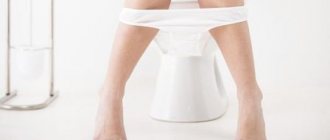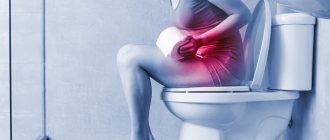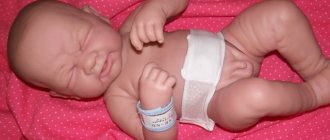Information on the topic
Frequent urination is not the same as urinary incontinence and is only considered a problem if it interferes with daily life or if you experience additional symptoms such as pain, fever, or blood in the urine. This article from the gynecologists of the Gynecology Center will tell you about the symptoms and reasons why a woman often and strongly wants to pee, what to do and where to go to the doctor in Moscow.
Our advantages:
- experienced doctors with over 15 years of experience,
- proven treatment methods,
- positive results.
What is the amount of urine per day?
Urine is a biological fluid produced by the kidneys and excreted from the body through the urinary tract. It serves to remove metabolic end products (waste), excess water and salts, as well as foreign substances coming from outside or formed in the body. The normal volume of daily urine excretion for an adult is from 800 ml to 1.5 liters.
People, especially those suffering from frequent urination, may ask questions: how many times a day should an adult pee (go to the toilet “little by little”) and is there any standard in medicine for this process?
Most people go to the toilet six to eight times every 24 hours, although an interval of four to 10 times may be considered normal. For example, if you drink a lot or are pregnant, you are likely to urinate more often than usual. Also, some medications, such as diuretics for high blood pressure, may make you need to go to the bathroom more often. If an adult woman “runs around” to pee more, or, conversely, visits the toilet extremely rarely, this is a sign of dysfunction in the genitourinary system.
What kind of urination is frequent?
If a woman feels like peeing more than 10 times a day, it may simply be because you are drinking too much water or coffee, which acts as a diuretic. The essence of the problem is that you need to understand - you began to urinate more often due to your lifestyle, or there is a medical reason for this.
Possible reasons
Sexually transmitted infections (STIs) are the most common cause of frequent urination in women, which occurs when bacteria invade the urethra. Other possible reasons why you feel like writing all the time include:
- Lots of alcohol or caffeine
- Interstitial cystitis
- Urinary incontinence
- Overactive Bladder Syndrome
- Taking diuretics
- Stress or severe anxiety
- Constipation (collection of stool)
- Pregnancy
- Urine and kidney stones
- Diabetes
- Gynecological pathology, incl. cold appendages
What to do if you often run to the toilet “smallly”
Doctors recommend that you see a doctor as soon as possible and get tested if you experience frequent urination along with any of these additional symptoms: ✔️ Loss of bladder control; ✔️ Increase in body temperature; ✔ Blood in urine, dark brown color; ✔ Pain when urinating; ✔ Pain in the side, lower abdomen or groin; ✔ Difficulty completely emptying the bladder; ✔️ Any formations or bulges in the pelvic area.
URINATION
Urination
(
mictio
; synonym:
uresis, urinatio
) - an voluntary, periodically occurring act of emptying the bladder. In the implementation of urination, the main part is taken by the smooth muscles of the bladder, extending to the urethra in men to the seminal hillock (tubercle); in women to the external opening of the urethra. The striated muscles of the perineum, abdominals and urogenital diaphragm are of less importance in urination. The act of urination is preceded by the processes of urine retention and adaptation of the bladder wall to the changing volume of its contents. The smooth muscles of the bladder are characterized by the preservation of autonomous tone and accommodation to urine entering the bladder cavity. This ensures the accumulation of urine and the constancy of intravesical pressure at a level that does not impede the flow of urine through the ureters. Urine retention in the resting phase is carried out by the neck of the bladder due to the inherent autonomic tone of the smooth muscles. When the bladder is tense or full, contraction of the muscles of the perineum and urethra is necessary to hold urine. The role of the muscles of the perineum and urethra in urinary retention increases when the bladder neck is damaged (for example, after prostatectomy). J. Lapides et al. showed that a certain length of the urethra is necessary for urine retention. In the resting phase, urine is retained in the bladder with a urethral length of 0.5 cm. When the bladder is filled and intra-abdominal pressure increases, the length of the urethra should be at least 3-4 cm.
L.A. Bekkere and V.M. Shumovsky (1862) established in an experiment the reflex nature of urination. Voluntary urination as a complex multi-stage process is carried out with the participation of various parts of the nervous system: the cerebral cortex (I - II zones of somatic sensitivity), subcortical structures (the region of the hypothalamus and the anterior part of the medullary pons); centers of the lumbar and sacral segments of the spinal cord; pelvic nerves and cystic branches from the hypogastric plexus, periorgan nodes, mechanoreceptors embedded in the wall of the bladder. Parasympathetic, cholinergic and beta-adrenergic neuroreceptors are located predominantly in the walls of the bladder. Alpha receptors are located in Ch. arr. in the area of the bottom, neck of the bladder and urethra. According to T. S. Lagutina, the relationship between intero- and exteroceptors during the formation of the M. reflex changes during ontogenesis.
Mahony (DF Mahony) et al. identifies 12 reflex processes that provide all stages of the act of urination. The significance of each reflex process for the successively developing stages of the act of urination has been established. The first 4 reflexes ensure urinary retention due to the effects of the sympathetic nervous system, inhibiting contractions of the detrusor and increasing the tone of the sphincter Bladder. Contractions of the detrusor are also inhibited by impulses coming from the muscles of the perineum, and the tone of the bladder sphincter is enhanced by a reflex from the mucous membrane of the posterior urethra. Due to the accumulation of urine and an increase in the volume of the bladder, deformation of the mechanoreceptors embedded in its wall occurs, which is a stimulus for the onset of urine. The flow of afferent impulses from the mechanoreceptors leads to a response in the form of increased contraction of the sphincter formations and relaxation of the bladder wall, facilitating its further filling. When the volume of urine exceeds 150 ml, the intensity of irritation of the bladder receptors increases and a feeling of urge to urinate may appear. An urgent need to empty the bladder usually occurs when 350-400 ml of urine accumulates in it, but this volume is subject to significant individual fluctuations. Contraction of the detrusor occurs under the influence of efferent impulses arriving along the fibers of the pelvic nerves belonging to the parasympathetic nervous system. Contraction begins at the bottom of the bladder, which leads to the opening of the internal opening of the urethra. The onset of M. leads to a drop in pressure in the bladder, which could stop further urine secretion, however, the following reflex processes come into play, and the second stage of the act of M. begins, characterized by relaxation of the muscles of the perineum and urethra due to impulses emanating from the wall of the bladder . At the same time, contraction of the bladder increases irritation of the mechanoreceptors embedded in it. On the other hand, stretching of the urethra reflexively causes further contraction of the bladder detrusor. The resulting closed chain of reflexes functions until the bladder is completely emptied. As its volume decreases, the original source of these reflexes is switched off. The last reflex occurs, leading to contraction of the perineal and pelvic muscles, relaxation of the bladder and the resumption of its filling phase. If receptor irritation weakens prematurely, the external sphincter may close before the bladder is completely emptied. The push of urine, which by inertia expands the urethra, again excites the urethrodetrusor reflex, and M. resumes. You can deliberately speed up the emptying of the bladder by repeated voluntary contractions of the perineal muscles, while creating rhythmic fluctuations in the flow of urine, which, according to P. Magasi, enhance the stimulation of the urethral receptors.
These reflex processes are not limited to the bladder, urethra and perineal muscles. The act of urination also involves other physiological systems of the body. Thanks to the participation of skeletal muscles, a posture that facilitates abdominal pain is created, and intravesical pressure increases due to contraction of the muscles of the abdominal wall and diaphragm. The latter circumstance is especially important when the pressure necessary for M. cannot be provided by contraction of the bladder. The dynamics of the functional states of the bladder causes reflex changes in kidney activity (amount of diuresis, urine concentration), fluctuations in blood pressure, respiratory rate, and sweating intensity. In diseases accompanied by persistent M. disorders, these reflexes intensify and lead to secondary changes in these organs and systems. M. dysfunction can be of neurogenic origin and arise as a result of congenital defects, damage or diseases of the brain, spinal cord, extra- and intramural pathways of the bladder. M.'s disturbances vary in form and intensity depending on the location, severity, and duration of damage to the nervous system. The initial stages of neurogenic disorders of M. are functional in nature. Deeper lesions of the nervous system lead to organic changes in the urinary tract: deformation of the ureterovesical segments with the development of vesicoureteral reflux, fibrous changes in the muscles of the bladder and disorders of its contractility, stenotic processes in the area of the vesicoureteral segment. These changes are usually accompanied by persistent urinary disturbances, pain, tenesmus, urinary retention or involuntary discharge, and frequent urges (see Dysuria, Ischuria, Urinary incontinence, Pollakiuria). M. disorders also often occur with malformations, injuries, inflammatory diseases, and neoplasms of the lower urinary tract and prostate gland (see Bladder, Urethra).
Diseases of various natures can be accompanied by M. disorders of the same form. Therefore, for the etiological and pathogenetic analysis of the M. disorders that have arisen, a comprehensive examination of patients is necessary (see Examination of the patient, urological). Research methods can be divided into clinical (including neurological examination), endoscopic (urethrocystoscopy), X-ray radiological (mictional urethrocystography, isotope cystorenography) and functional (uroflowmetry, cystometry, rectal manometry, periurethral electromyography). Uroflowmetry (see) allows a total objective assessment of the act of M. according to the main parameter - the volumetric velocity of M. Comparison of uroflowmetric indicators with cystometry data allows one to calculate the profile of urethral resistance, the strength of urine flow and the contractility of the bladder muscle. Simultaneous measurement of pressure in the rectum and electromyography (see) reveal the degree of participation of skeletal muscles in different periods of M. The same disease (eg, prostate adenoma, contracture of the bladder neck) may be accompanied by damage to various receptors of the bladder wall. The nature of these lesions is determined by performing uroflow and cystometry against the background of exposure to neurotropic drugs. The data obtained on the predominant dysfunction of cholinergic, beta- or alpha-adrenergic neuroreceptors are used for rational pharmacological correction of functional changes in the muscle. Selective use of anticholinergic, adrenergic drugs, and alpha blockers helps to normalize urination. For urinary disorders caused by stenotic disease of the urethra, pathogenetically justified surgical intervention is indicated.
Bibliography:
Bekkere L.A. and Shumovsky B.M. Determination of the activity of the muscle that expels urine, Med. Vestn., No. 39, p. 375, no. 40, p. 383, 1862; Derzhavin V. M., Vishnevsky E. L. and Gusev B. S. The influence of beta-adrenergic mediators on detrusor function, Urol, and nephrol., No. 5, p. 3, 1976; Guide to Clinical Urology, ed. A. Ya. Pytelya, p. 111, M., 1969; Savchenko N. E. and Solonenko A. D. Functional pharmacological tests of the bladder in normal conditions and in neurogenic urination disorders, Zdravookhr. Belarus, No. 11, p. 27, 1973; Khayutin V. M. On the conditions of irritation of mechanoreceptors, in the book: Vopr, fiziol, interoception, ed. K. M. Bykova, V. 1, p. 540, M.-L., 1952; Jonas U. Pathophysiologie von Blase und Urethra, Urologe, Bd 17, S. 80, 1977; Khanka OP Disorders of micturition, Urology, v. 8, p. 316, 1976, bibliogr.; Magasi P. Neuere Auffassung iiber den Miktionmecha-nismus, Acta chir. Acad. Sci. hung., Bd 18, S. 231, 1977; MahonyD.F., Laferte R, O. a. Blais DJ Integral storage and voiding reflexes, neurophysiologic concept of continence and micturition, Urology, v. 9, p. 95, 1977, bibliogr.; Schultheis Th. u. Rutishauser G. Kontinenz und Miktion, Z. Urol., Bd 56, S. 191, 1963, Bibliogr.
K. A. Velikanov.
Treating Frequent Urination
If you have an infection and want to pee because of acute cystitis, antibiotics will usually clear it up quickly and effectively.
There are also other medications that relax the bladder, which may be helpful in relieving overactive bladder symptoms and reducing episodes of urinary incontinence. In some cases, you can use injections - injections of gel into the urethra when urine leaks from a weak bladder. Nerve stimulation or surgery may also be recommended for some conditions. In any case, abnormalities in urination can be treated only after a comprehensive examination and clarification of the diagnosis. assignment_ind
Make an appointment with a gynecologist ☏ +7(495)790-0779
Do you often want to pee after sex? Find out how one injection of hyaluronic acid can help girls get rid of this problem.
assignment_ind
Transposition of the urethra for the treatment of cystitis after sex










